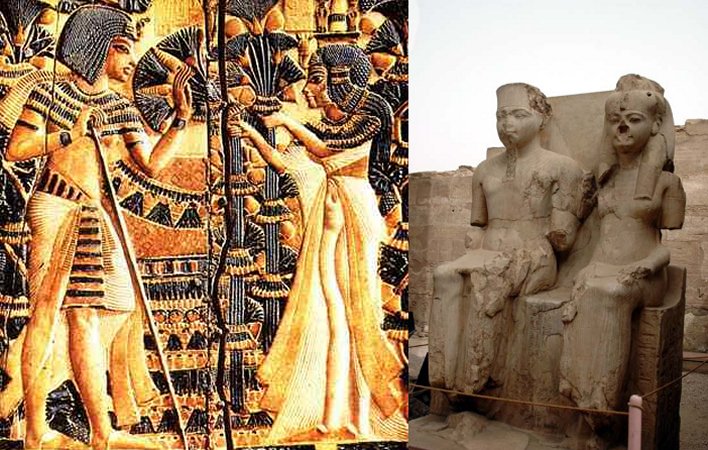Pharaoh Ay – A Man With A Hidden Agenda Or A Victim Of Unfortunate Circumstances?
Ellen Lloyd - AncientPages.com - Piecing together what really happened in the life of Pharaoh Ay is not easy for historians. Pharaoh Ay was not as famous as Khufu, Ramses II, Akhenaten, Hatshepsut just to mention a few, but he was certainly an interesting individual.
He ruled for only a brief period and he didn’t accomplish much during his time as pharaoh, but he was a key figure in an ancient historical drama.
Until this day, historians and Egyptologists are still trying to determine whether Pharaoh Ay was a liar and man with a hidden agenda or simply a victim of unfortunate circumstances.
A stone block shows Ay receiving the "Gold of Honor" award in his Amarna tomb from Akhenaten. Credit: Public Domain
Pharaoh Ay claimed he was innocent and never murdered anyone to ascend the throne, but many feel his words contradict documented historical events.
Who Was Pharaoh Ay?
The fact that Pharaoh Ay built a rock chapel dedicated to God Min in the city of Akhmim, located on the east bank of the Nile, is one reason why historians assume Ay was a native Egyptian. However, his father’s name, Yuya, was uncommon in Egypt, and this has led to speculations that Ay may have been of Syrian origin to some extent.
“Ay held the titles 'superintendent of the royal horses' and 'god's father; it has therefore been argued that he may well have been Tiy's brother, Akhenaten uncle and perhaps uncle or great-uncle of Tutankhamun. It has even been suggested that the unusual office of 'god's father' could be held only by the king's father-in-law, which might have made Ay the father of Nefertiti,” Ian Shaw and Paul Nicholson write in their book Dictionary of Ancient Egypt.
Pharaoh Ay performing the Opening of the Mouth ceremony on Tutankamun. Ay is wearing the Leopard skin worn by Egyptian High Priests and a Khepresh, a blue crown worn by Pharaohs. Credit: Public Domain
Before ascending the throne, Ay was first a member of the court of pharaoh Akhenaten. He held the highest military rank, just below the general and he had a close relationship with the royal family.
Ay’s wife, Tey, served as the nurse of Nefertiti, Akhenaten’s queen. Ay was allowed to build his own large tomb in Tell el-Amarna where the unorthodox lived with his family and prominent and trustworthy citizens.
Pharaoh Tutankhamun Under The Guidance Of Vizier Ay
The life of Ay was good, but things became more complicated after the death of pharaoh Akhenaten when his young son Tutankhamun ascended the throne at the age of eight, possibly nine.
Pharaoh Tutankhamun was much too young to rule independently, so he was surrounded by influential advisers. One of them was General Horemheb, and the other one was Ay. Both performed their duties as viziers. Next after the Pharaoh, the most powerful person in ancient Egypt was the vizier. As the highest state official, the vizier was the immediate subordinate of the king and responsible for legal matters, and thus feared by criminals.
The viziers advised pharaoh Tutankhamun to restore Egypt to its former glory and reverse several changes made during his father's reign. Pharaoh Akhenaten had previously caused controversy in Egypt by introducing the worship of only one god, Aten, and limiting the priests’ role and power. Pharaoh Tutankhamun agreed and restored the power of the Amun priesthood, and the country saw a return of the old gods.
Tutankhamun married his half-sister Ankhesenamun, whose life was a real tragedy, as earlier discussed on Ancient Pages.
Incest was common and not considered wrong in ancient Egypt. Egyptians believed that by marrying a sister or daughter, it was possible to preserve the royal bloodline. It is believed that Ankhesenamun was first married to her father Akhenaten.
Left: Queen Ankhesenamun presents lotus flowers to Tutankhamen. From an ivory box from Tutankhamen's tomb. Right: Statues of Tutankhamen and Ankhesenamun
Pharaoh Tutankhamun and Ankhesenamun did not have any children that survived. Archaeologists have discovered the remains of two miscarried daughters in Tutankhamun’s tomb.
If these daughters had lived, they would eventually have taken the place of Queen Ankhesenamun, continued the Amarna bloodline and changed the history of ancient Egypt.
Queen Ankhesenamun found herself in great difficulties when Pharaoh Tutankhamun died. She felt there was a need to continue the Amarna bloodline and she wrote a desperate letter to Suppiluliumas I, the King of the Hittites. This was the beginning of the controversial Zannanza affair.
Was Pharaoh Ay Involved In Two Murders?
As previously discussed on Ancient Pages, historians suggest Ankhesenamun wrote to the Hittite king using the name Dakhamunzu when she signed the letter. She asked the Hittite king to send someone who could marry her.
King Suppiluliumas I was reluctant for a start. Still, after sending an envoy to verify her claim and confirming the letter was genuine, he eventually decided to send his son Zannanza to Egypt to marry late Tutankhamun’s wife. It seems like a wise decision at the time. Zannanza would become a new pharaoh, and Egypt could become part of the Hittite empire.
But this plan failed because Zannanza never even reached the Egyptian border before he was murdered. It remains unknown how he died and who killed him.
Queen Ankhesenamun was forced to marry Ay despite her strong objections to the union. Ay ascended the throne and became pharaoh, but his successful claim to power is not entirely clear.
King Suppiluliumas I accused Ay of murdering his son Zannanza in order to claim rule over Egypt. Ay denied the accusations and said he was innocent.
Pharaoh Ay also came in conflict with general Horemheb, who felt that he had been outmaneuvered to the throne by Ay.
What is even most perplexing in this ancient historical drama is the mysterious death of Queen Ankhesenamun who vanished from history shortly after her marriage to Pharaoh Ay. Equally puzzling is that archaeologists found the name Tey, the wife of Ay and the wet nurse of Queen Nefertiti on the walls of Pharaoh Ay's tomb.
Queen Ankhesenamun’s name is not mentioned at all. It was as if she had been erased from history.
Many historians have suggested Pharaoh Ay was responsible for the murder of prince Zannanza to prevent him from becoming pharaoh and killing Queen Ankhesenamun whom he no longer needed because he had already ascended the throne.
Whether Pharaoh Ay was a man with a hidden agenda or simply a poor victim of miserable circumstances remains unclear.
Pharaoh Ay reigned for four years only, (1323BC-1319BC), and there are not many records or monuments attributed to him. His successor Horemheb, the last pharaoh of the 18th dynasty, made sure that the name of Ay was eliminated from historical records. This was part of his Damnatio memoriae campaign (a modern Latin phrase meaning "condemnation of memory") that meant a person is from official accounts. Pharaoh Horemheb also desecrated Ay’s burial and smashed his sarcophagus into pieces.
Fortunately, Pharaoh Horemheb failed to erase Pharaoh Ay entirely from history. In the Valley of the Kings, located on the Nile's west bank near Luxor modern archaeologists unearthed a sarcophagus that still preserved Pharaoh Ay's cartouche.
As Shaw and Nicholson write, “one unique feature of this tomb is the presence of a scene of hunting in the marshes, which was usually found in nobles' tombs rather than the burial place of a pharaoh.” Still, most interesting is that the scenes in the tomb portray Ay with his first wife Tey rather than Queen Ankhesenamun.
We may never know the whole truth about the actions of Pharaoh Ay, and some part of his life story remains an ancient mystery. Whatever secrets Pharaoh Ay had, he took them to the grave with him, and unless we can uncover more evidence, we are still left with many unanswered questions.
Written by Ellen Lloyd – AncientPages.com
Updated on September 17, 2021
Copyright © AncientPages.com All rights reserved. This material may not be published, broadcast, rewritten or redistributed in whole or part without the express written permission of AncientPages.com
Expand for referencesMore From Ancient Pages
-
 Neolithic Monuments, Prehistoric Pits And Anglo-Saxon Cemetery Unearthed In England
Archaeology | Apr 19, 2016
Neolithic Monuments, Prehistoric Pits And Anglo-Saxon Cemetery Unearthed In England
Archaeology | Apr 19, 2016 -
 Why Did Winter Baths Become So Popular?
Ancient History Facts | Jan 16, 2024
Why Did Winter Baths Become So Popular?
Ancient History Facts | Jan 16, 2024 -
 Strange Ancient Artifacts And Foreigners Who Were Not Meant To Be In North America
Artifacts | Mar 16, 2020
Strange Ancient Artifacts And Foreigners Who Were Not Meant To Be In North America
Artifacts | Mar 16, 2020 -
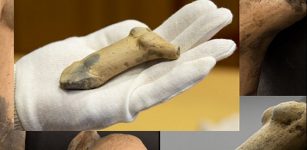 Fragments Of 6,500-Year-Old Figurine Of ‘Venus of Egerszeg’ – Unearthed
Archaeology | Jul 21, 2020
Fragments Of 6,500-Year-Old Figurine Of ‘Venus of Egerszeg’ – Unearthed
Archaeology | Jul 21, 2020 -
 Puzzling Sakwala Chakraya Carving Could Be World’s Oldest Map Of The Universe – Mystery Of Sri Lanka’s Stargate
Featured Stories | May 15, 2021
Puzzling Sakwala Chakraya Carving Could Be World’s Oldest Map Of The Universe – Mystery Of Sri Lanka’s Stargate
Featured Stories | May 15, 2021 -
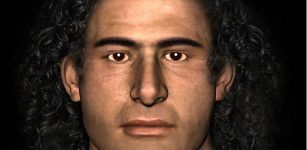 DNA Analysis Shows Griffin Warrior Ruled His Greek Homeland
Archaeology | Aug 26, 2022
DNA Analysis Shows Griffin Warrior Ruled His Greek Homeland
Archaeology | Aug 26, 2022 -
 Temple Dedicated To Goddess Nemesis Discovered Under Ancient Theater In Greece
Archaeology | May 20, 2019
Temple Dedicated To Goddess Nemesis Discovered Under Ancient Theater In Greece
Archaeology | May 20, 2019 -
 Enigmatic Denisovans Interbred With Modern Humans More Than Once
Archaeology | Mar 22, 2018
Enigmatic Denisovans Interbred With Modern Humans More Than Once
Archaeology | Mar 22, 2018 -
 Mystery Of The Amazing 2,500-Year-Old Underwater Rochelongue Treasure
Featured Stories | Jul 7, 2023
Mystery Of The Amazing 2,500-Year-Old Underwater Rochelongue Treasure
Featured Stories | Jul 7, 2023 -
 Garden Of Eden And Its Four Rivers – Possible Locations Of Biblical Paradise Suggested By Archaeologists, Historians And Biblical Scholars
Biblical Mysteries | May 29, 2017
Garden Of Eden And Its Four Rivers – Possible Locations Of Biblical Paradise Suggested By Archaeologists, Historians And Biblical Scholars
Biblical Mysteries | May 29, 2017 -
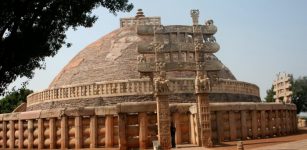 The Great Stupa At Sanchi – Oldest Stone Structure In India
Featured Stories | Dec 27, 2015
The Great Stupa At Sanchi – Oldest Stone Structure In India
Featured Stories | Dec 27, 2015 -
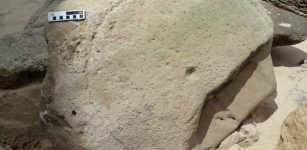 Our Ancestors Made Drawings In The Sand At The Beach 140,000 Years Ago – Scientists Say
Featured Stories | Jul 21, 2023
Our Ancestors Made Drawings In The Sand At The Beach 140,000 Years Ago – Scientists Say
Featured Stories | Jul 21, 2023 -
 Oral Stories Of Australia’s First Nations Might Be 10,000 Years Old – Evidence Found
Archaeology | Aug 2, 2023
Oral Stories Of Australia’s First Nations Might Be 10,000 Years Old – Evidence Found
Archaeology | Aug 2, 2023 -
 Cyclops – First Generation Of Giants Who Were Prisoners Of Tartarus
Featured Stories | Mar 21, 2018
Cyclops – First Generation Of Giants Who Were Prisoners Of Tartarus
Featured Stories | Mar 21, 2018 -
 Surprising Evolution Discovery – Extinct Subterranean Human Species With Tiny Brains Used Fire
Archaeology | Dec 9, 2022
Surprising Evolution Discovery – Extinct Subterranean Human Species With Tiny Brains Used Fire
Archaeology | Dec 9, 2022 -
 Dangerous Anomaly Inside Mysterious European Mountain Remains Unexplained – Examining Evidence – Part 2
Featured Stories | Mar 17, 2021
Dangerous Anomaly Inside Mysterious European Mountain Remains Unexplained – Examining Evidence – Part 2
Featured Stories | Mar 17, 2021 -
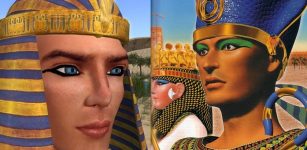 Ancient Egyptian Men Used Eye Makeup For Many Reasons
Ancient History Facts | May 9, 2016
Ancient Egyptian Men Used Eye Makeup For Many Reasons
Ancient History Facts | May 9, 2016 -
 Great Wall Of India: Massive Structure That Surrounds Ancient Fort Of Kumbhalgarh
Featured Stories | Aug 31, 2015
Great Wall Of India: Massive Structure That Surrounds Ancient Fort Of Kumbhalgarh
Featured Stories | Aug 31, 2015 -
 Leonardo Da Vinci’s Mother Might Have Been A Slave – Here’s What The Discovery Reveals About Renaissance Europe
Featured Stories | Mar 30, 2023
Leonardo Da Vinci’s Mother Might Have Been A Slave – Here’s What The Discovery Reveals About Renaissance Europe
Featured Stories | Mar 30, 2023 -
 Zagros Mountains: Home To Tribes, Kingdoms And Empires For Thousands Of Years
Civilizations | Sep 16, 2020
Zagros Mountains: Home To Tribes, Kingdoms And Empires For Thousands Of Years
Civilizations | Sep 16, 2020



